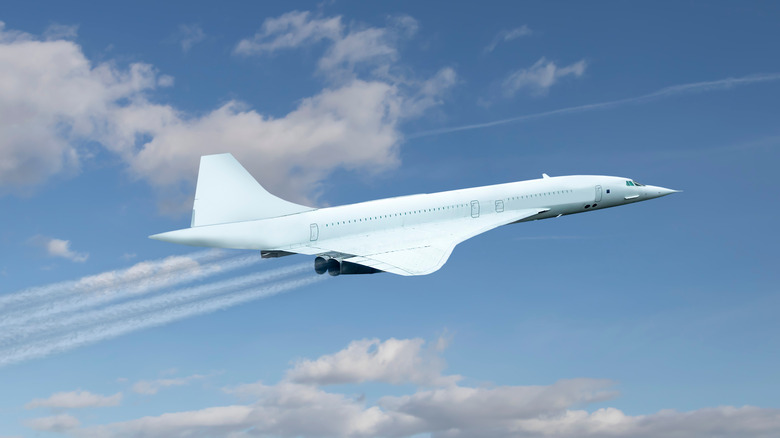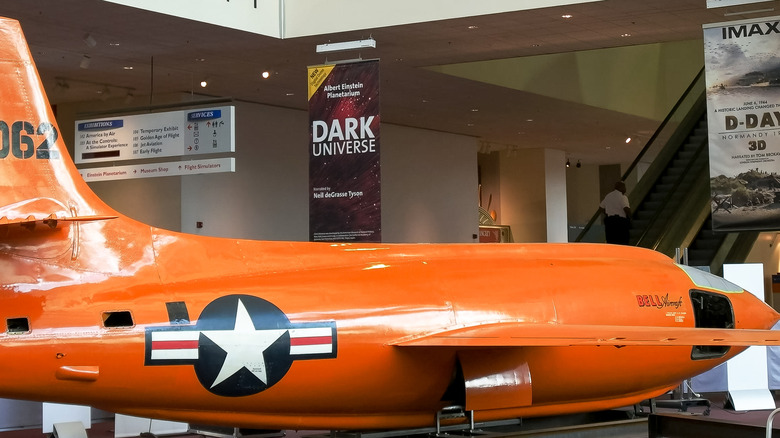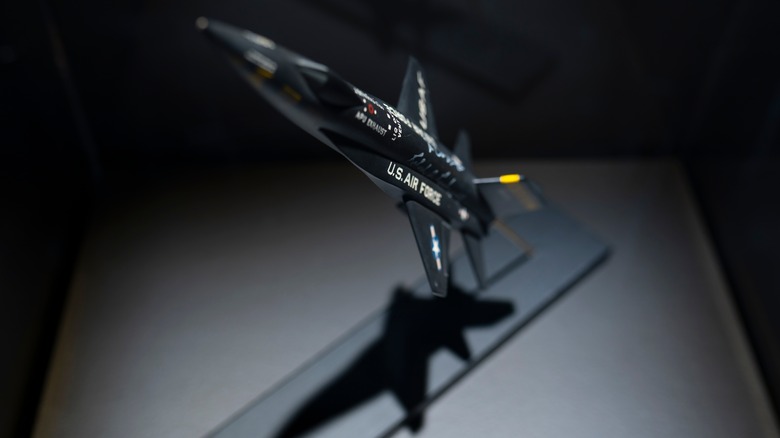Supersonic Versus Hypersonic: What's The Difference?
Humans have a tendency to impose our understanding of the laws of physics, our conception of what's possible, on the rest of the universe. The fact is that we keep pushing the goalposts of exactly what's possible with each new scientific breakthrough and invention. Supersonic and hypersonic flight are but two examples of the tremendous strides in aviation technology that we have made.
According to Guinness World Records, the Tupolev Tu-144 holds the speed record for the fastest airliner, hitting a remarkable true airspeed of 2,430 kmph (around 1,509 mph) in November 1970. The aircraft in question was a prototype created by the Soviet Union, a supersonic speeder with tremendous potential (not unlike the United States' supersonic training jet).
Those inexperienced in the field of aviation will be familiar with the term "supersonic," but perhaps not entirely sure what it means. It's often used colloquially to mean "very fast" (see also: Sonic the Hedgehog). However, there are some major differences between supersonic and hypersonic flight. Here's what each term really means.
What is supersonic flight?
As the Cambridge Dictionary reports, supersonic can be defined in quite simple terms: "faster than the speed of sound." This, too, is a little difficult for those who aren't versed in the physics of it all to comprehend, so let's consider what the speed of sound actually is.
It will depend, of course, on the medium that sound is traveling through, but as a base value the speed of sound is 761 mph, or about 1100 feet per second. In aviation, Mach 1 flight is considered breaking the sound barrier, a feat that humanity first achieved almost a century ago. It was the U.S. Air Force's Chuck Yeager who accomplished flight in excess of Mach 1 (700 mph or 1126.5 kmph) in October of 1947. He was piloting a rocket-powered Bell X-1.
Aviation technology advances very fast indeed. Just six years later, Yeager reached beyond Mach 2 (1650 mph or 2655.4 kmph) in another flight, in a modified version of the history-making craft he flew in 1947. This tops the pace recorded by the Tupolev Tu-144 airliner, but is still some distance from hypersonic flight. As remarkable as supersonic aircraft can be, they're just the beginning.
How does hypersonic flight differ from supersonic?
Hypersonic, per Merriam-Webster, is defined as "of or relating to speed five or more times that of sound in air." Considering the dizzying pace at which Yeager traveled to break Mach 2, this is a remarkable feat.
Subsonic flight, NASA details, is less than Mach 1, while Transonic is equal to it and Supersonic is in excess of it. Hypersonic, then, is flight at Mach 5 or higher. It was first achieved during "Bumper," a U.S. Army test that used a World War II V-2 missile and a WAC- Corporal from the United States. The rocket, according to the Smithsonian National Air and Space Museum, reached 5,150 mph (8288.1 kmph) in February 1949.
Hypersonic flight remains a primary focus of aeronautical research, and NASA (among other institutions) continues to innovate in the field. In November 2004, a NASA scramjet shattered a world record speed. Mach 9.6 (almost 11,265.4 kmph) was hit by an X-43A, which the institution proudly boasted at the time was far beyond the speed achieved by "the fastest air-breathing, manned vehicle, the U.S. Air Force SR-71," which exceeded Mach 3.2.


